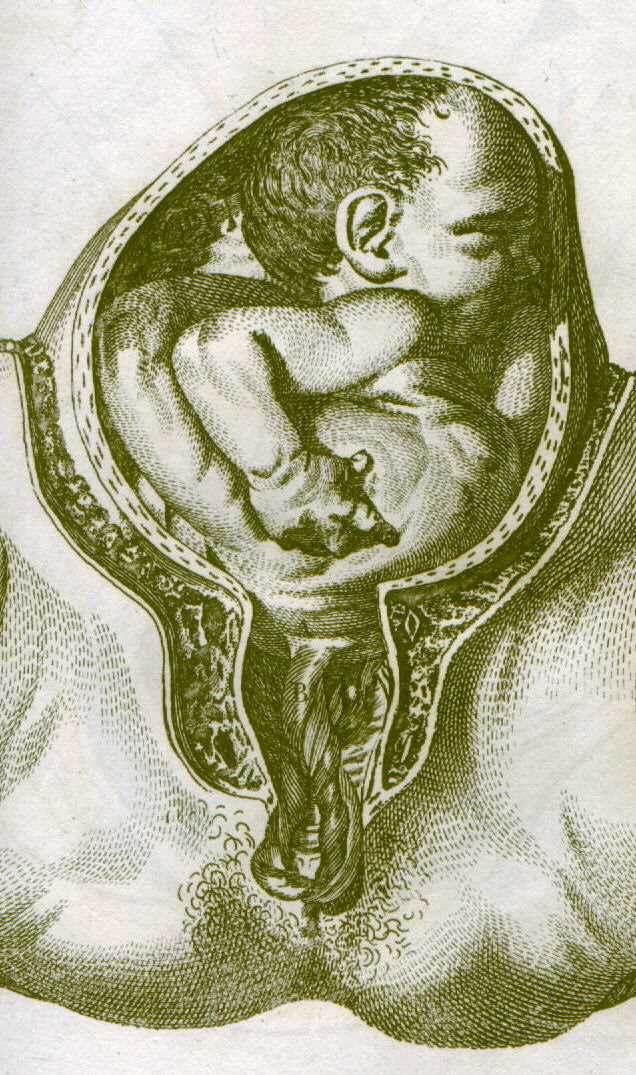[1]
Holbrook BD, Phelan ST. Umbilical cord prolapse. Obstetrics and gynecology clinics of North America. 2013 Mar:40(1):1-14. doi: 10.1016/j.ogc.2012.11.002. Epub
[PubMed PMID: 23466132]
[2]
Murphy DJ, MacKenzie IZ. The mortality and morbidity associated with umbilical cord prolapse. British journal of obstetrics and gynaecology. 1995 Oct:102(10):826-30
[PubMed PMID: 7547741]
[3]
Kahana B, Sheiner E, Levy A, Lazer S, Mazor M. Umbilical cord prolapse and perinatal outcomes. International journal of gynaecology and obstetrics: the official organ of the International Federation of Gynaecology and Obstetrics. 2004 Feb:84(2):127-32
[PubMed PMID: 14871514]
[4]
Gibbons C, O'Herlihy C, Murphy JF. Umbilical cord prolapse--changing patterns and improved outcomes: a retrospective cohort study. BJOG : an international journal of obstetrics and gynaecology. 2014 Dec:121(13):1705-8. doi: 10.1111/1471-0528.12890. Epub 2014 Jun 16
[PubMed PMID: 24931454]
Level 2 (mid-level) evidence
[5]
Sayed Ahmed WA, Hamdy MA. Optimal management of umbilical cord prolapse. International journal of women's health. 2018:10():459-465. doi: 10.2147/IJWH.S130879. Epub 2018 Aug 21
[PubMed PMID: 30174462]
[6]
Koonings PP, Paul RH, Campbell K. Umbilical cord prolapse. A contemporary look. The Journal of reproductive medicine. 1990 Jul:35(7):690-2
[PubMed PMID: 2376856]
[7]
Ezra Y, Strasberg SR, Farine D. Does cord presentation on ultrasound predict cord prolapse? Gynecologic and obstetric investigation. 2003:56(1):6-9
[PubMed PMID: 12867760]
[8]
Khan RS, Naru T, Nizami F. Umbilical cord prolapse--a review of diagnosis to delivery interval on perinatal and maternal outcome. JPMA. The Journal of the Pakistan Medical Association. 2007 Oct:57(10):487-91
[PubMed PMID: 17990422]
[11]
Caspi E, Lotan Y, Schreyer P. Prolapse of the cord: reduction of perinatal mortality by bladder instillation and cesarean section. Israel journal of medical sciences. 1983 Jun:19(6):541-5
[PubMed PMID: 6862862]
[12]
Katz Z, Shoham Z, Lancet M, Blickstein I, Mogilner BM, Zalel Y. Management of labor with umbilical cord prolapse: a 5-year study. Obstetrics and gynecology. 1988 Aug:72(2):278-81
[PubMed PMID: 3393364]
[13]
Barrett JM. Funic reduction for the management of umbilical cord prolapse. American journal of obstetrics and gynecology. 1991 Sep:165(3):654-7
[PubMed PMID: 1892193]
[14]
Katz Z, Lancet M, Borenstein R. Management of labor with umbilical cord prolapse. American journal of obstetrics and gynecology. 1982 Jan 15:142(2):239-41
[PubMed PMID: 7055190]
[15]
Leong A, Rao J, Opie G, Dobson P. Fetal survival after conservative management of cord prolapse for three weeks. BJOG : an international journal of obstetrics and gynaecology. 2004 Dec:111(12):1476-7
[PubMed PMID: 15663142]
[16]
Hehir MP, Hartigan L, Mahony R. Perinatal death associated with umbilical cord prolapse. Journal of perinatal medicine. 2017 Jul 26:45(5):565-570. doi: 10.1515/jpm-2016-0223. Epub
[PubMed PMID: 27831923]
[17]
Hasegawa J, Sekizawa A, Ikeda T, Koresawa M, Ishiwata I, Kawabata M, Kinoshita K, Japan Association of Obstetricians and Gynecologists. Clinical risk factors for poor neonatal outcomes in umbilical cord prolapse. The journal of maternal-fetal & neonatal medicine : the official journal of the European Association of Perinatal Medicine, the Federation of Asia and Oceania Perinatal Societies, the International Society of Perinatal Obstetricians. 2016:29(10):1652-6. doi: 10.3109/14767058.2015.1058772. Epub 2015 Jul 16
[PubMed PMID: 26135792]
[18]
Gilbert WM, Jacoby BN, Xing G, Danielsen B, Smith LH. Adverse obstetric events are associated with significant risk of cerebral palsy. American journal of obstetrics and gynecology. 2010 Oct:203(4):328.e1-5. doi: 10.1016/j.ajog.2010.05.013. Epub 2010 Jul 3
[PubMed PMID: 20598283]
[19]
. ACOG Committee Opinion No. 766 Summary: Approaches to Limit Intervention During Labor and Birth. Obstetrics and gynecology. 2019 Feb:133(2):406-408. doi: 10.1097/AOG.0000000000003081. Epub
[PubMed PMID: 30681540]
Level 3 (low-level) evidence
[20]
Koyama S, Tomimatsu T, Kanagawa T, Tsutsui T, Kimura T. The amnioscope strikes back as a useful device for pinhole amniotomy in the management of polyhydramnios. AJP reports. 2011 Dec:1(2):99-104. doi: 10.1055/s-0031-1285983. Epub 2011 Aug 2
[PubMed PMID: 23705096]
[21]
Tan WC, Tan LK, Tan HK, Tan AS. Audit of 'crash' emergency caesarean sections due to cord prolapse in terms of response time and perinatal outcome. Annals of the Academy of Medicine, Singapore. 2003 Sep:32(5):638-41
[PubMed PMID: 14626792]
[22]
Copson S, Calvert K, Raman P, Nathan E, Epee M. The effect of a multidisciplinary obstetric emergency team training program, the In Time course, on diagnosis to delivery interval following umbilical cord prolapse - A retrospective cohort study. The Australian & New Zealand journal of obstetrics & gynaecology. 2017 Jun:57(3):327-333. doi: 10.1111/ajo.12530. Epub 2016 Sep 7
[PubMed PMID: 27604839]
Level 2 (mid-level) evidence
[23]
Siassakos D, Hasafa Z, Sibanda T, Fox R, Donald F, Winter C, Draycott T. Retrospective cohort study of diagnosis-delivery interval with umbilical cord prolapse: the effect of team training. BJOG : an international journal of obstetrics and gynaecology. 2009 Jul:116(8):1089-96. doi: 10.1111/j.1471-0528.2009.02179.x. Epub 2009 May 11
[PubMed PMID: 19438496]
Level 2 (mid-level) evidence

